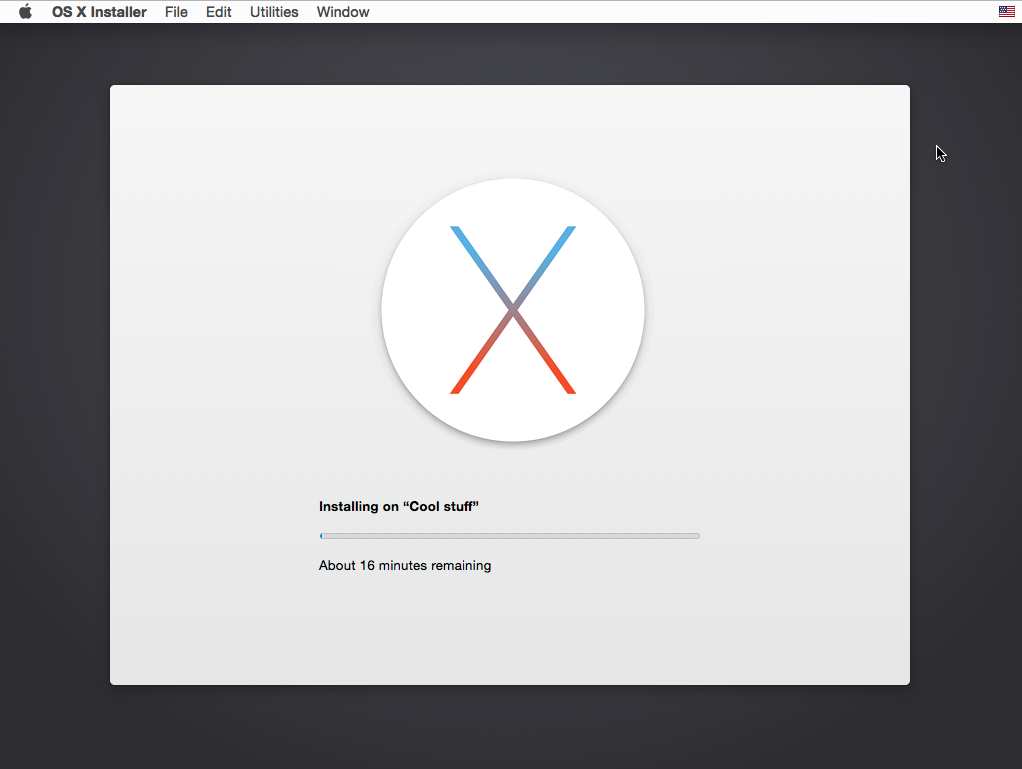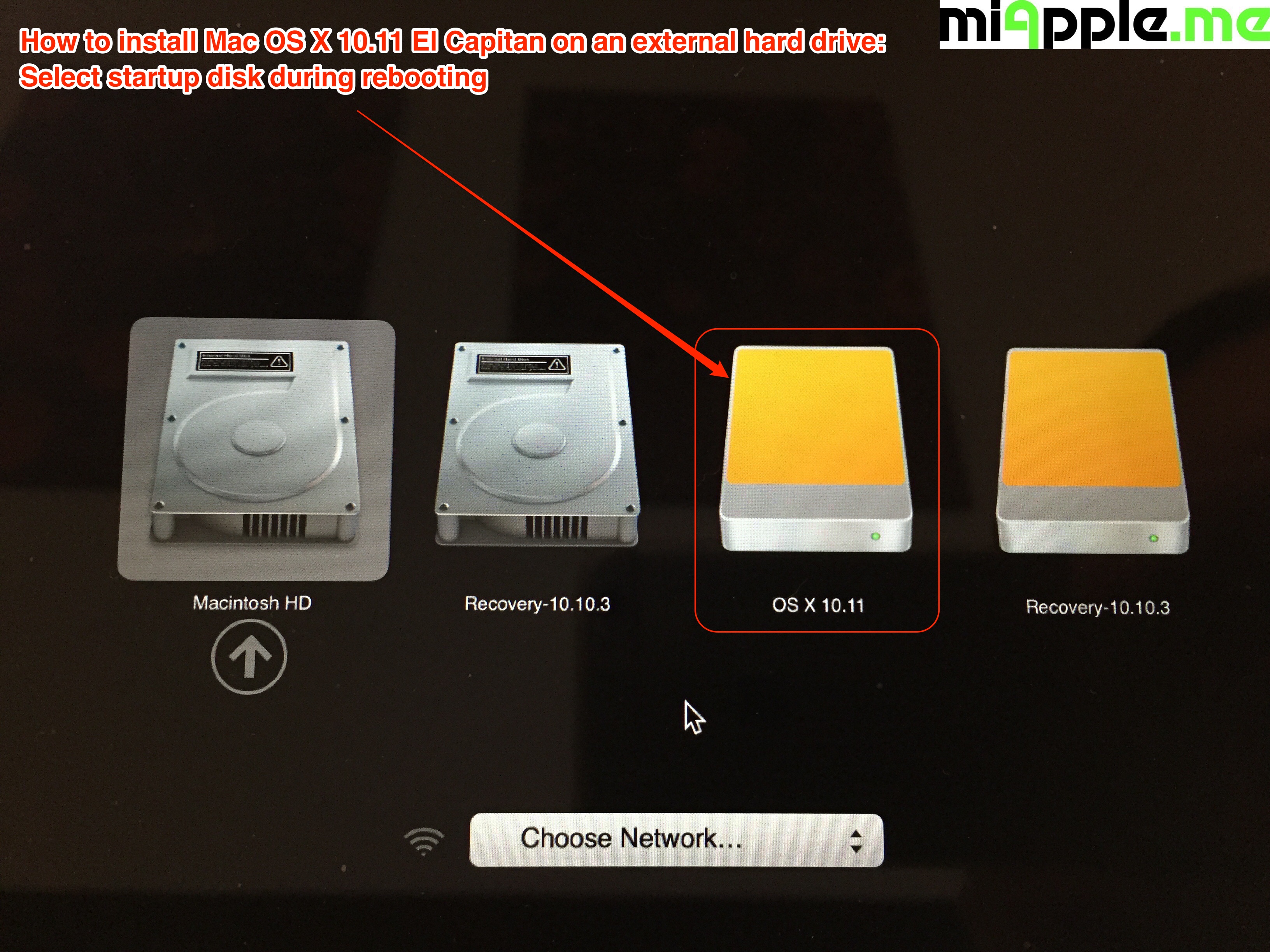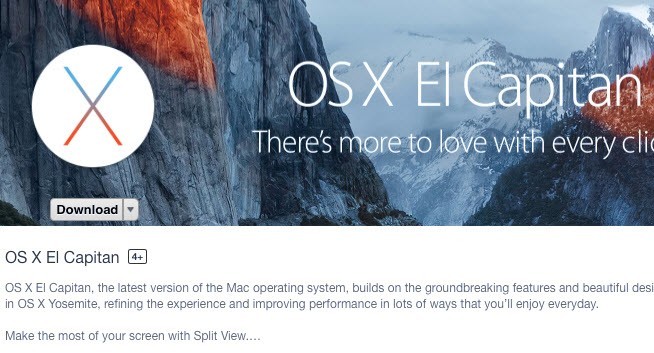

- #How to install os x el capitan on a blank hard drive portable
- #How to install os x el capitan on a blank hard drive download
- #How to install os x el capitan on a blank hard drive mac

The copied installer can be stored anywhere and re-used as necessary. This method isn't quite as handy as making a dedicated OS X install drive, but doesn't require the user to dedicate a flash drive or external partition to the installer.
#How to install os x el capitan on a blank hard drive mac
The saved installer can then be copied to the Applications folder on any compatible Mac and launched from there. Once it is run, the installer deletes itself. Simply copy the "Install OS X." installer to any external USB drive before running it. When the OS X installer finishes downloading, the installer app can be found in the Applications folder. There is a third way to install OS X on multiple computers without redownloading the installer:

But the above steps will quickly get a NetInstall server up and running relatively quickly and save the tedium of running around your network with a USB drive to install one at a time. Other network disk deployment choices exist, such as DeployStudio or JAMF, and there are lots of additional hooks and options to choose from within this and other solutions if you are planning to deploy El Cap to lots and lots of machines in a short period of time, you should probably explore multicast ASR (Google it). To connect Mac systems to the NetInstall server, you can hold down the N key on the keyboard as they boot, use the Startup Disk preference pane, or hold down the Option key on the keyboard during boot if there are multiple network images to choose from on the network. You should see a green dot next to the NetInstall service in the lefthand pane.ġ0. Confirm that your NetInstall image appears in the Images pane, then turn the service to ON in the upper right corner. For Enable NetInstall on:, choose an appropriate interface (I strongly suggest using Gigabit Ethernet)ĩ. For Storage Locations, click Edit Storage Locations, select the volume you used in step 5 above (mine was just Macintosh HD), and in the Storage Data column, choose Images and Client Data.Ĩ. In Server.app, select Advanced at the bottom of the left pane, then select NetInstallħ. Follow the remainder of the wizard you can leave most options untouched unless you want to push configuration profiles, post-installation scripts, computer names, directory servers, restrict Mac models, apply MAC address filters, etc., until you get to the Creating Image, where you need to save the image into /Library/NetBoot/NetBootSP0 (use root to create those folders if they don't exist yet).Ħ. For Source, select "Install OS X El Capitan" from the drop-down menu.ĥ. Open Server.app and select Tools > System Image Utility to open the SIU wizard.Ĥ.
#How to install os x el capitan on a blank hard drive download
If the "Install OS X El Capitan" application is not already in your Applications folder, download it from the App Store.Ģ. If you are planning to install more than, say five systems, then a network imaging solution is probably a faster option than running from machine to machine with just a USB stick, regardless of how fast its throughput is.Īssuming you have a dedicated system running El Capitan 10.11 and Server 5.x, follow these steps:ġ. The newer versions of Server.app are much easier for managing this process than in previous iterations, with more features and options too.

However, if installing onto multiple Macs is the overarching goal (which was one of the reasons stated in the article for making a USB installer), I recommend using OS X Server's Netinstall. I have my own USB stick for installing OS X in a pinch and the command line is a one-and-done affair.
#How to install os x el capitan on a blank hard drive portable
I've gone to a dedicated 8GB volume on a $80 2TB portable drive for these purposes (the rest of the drive is used for backups, and it runs at over 50MBps sustained reads you could spend $100 for a 16GB USB stick reaching 250MBps speeds though), and the speed in installing OSes and OS updates is really nice.Īll good comments and very helpful steps. Just run something like the BlackMagic speed test or similar on it before deciding it is a good drive to use for installs. Lexmark or Lexar maybe?) Target sells are pathetically slow (something like 1.5-2MBps, compared to a fast USB stick running at ~200+MBps), and I'm sure they aren't alone. The $10/2 8GB USB sticks (I forget which brand. I'm definitely making a USB disk if/when I move to the El Capitan. Useful for troubleshooting if you really need it, but it takes a lonnnnnng time to boot from that disc. I used an equivalent process to the one described here to create a Mavericks DVD, with no USB intermediary. I've even heard of success stories involving making the USB media then burning the partition itself to a double-layer DVD disc - and thus having a bootable optical disc version for your older Macs.


 0 kommentar(er)
0 kommentar(er)
